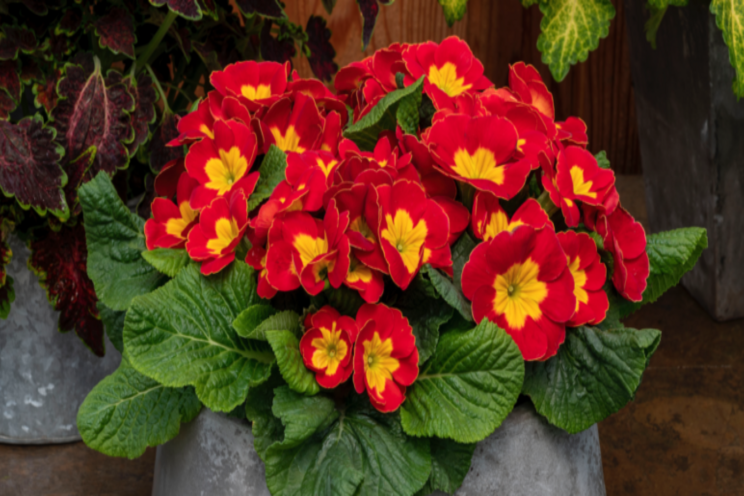Culture Report: Primula Princessa Series
Added on 23 October 2020

INNOVATIVE FLOWER BREEDING
For several decades, Sakata Ornamentals' R&D plant breeders have become known for their unique contributions to the industry. Sakata's Primula acaulis series, Danova, Super Nova, Danessa and others have become synonymous with success and profitability for growers. The new Princessa primula will certainly continue the high standards that have been set. With its ability to flower profusely with little to no vernalization, combined with its exceptional durability in shipping and handling, growers will love producing, finishing and shipping Princessa and watch them sell quickly at retail stores.
GROWING AND PRODUCTION DETAILS
For a successful crop, follow the guidelines below.
• Recommended media pH is 5.8 to 6.2. Monitor pH closely; levels above 6.2 may result in iron chlorosis.
• Fertilize plugs with 100 ppm of nitrogen with calcium nitrate-based fertilizer. Maintain soil EC levels between 0.26 and 0.75.
• Generally, primula are not bothered by insects, but problems with fungus gnats and shore flies are common during the germination and plug stages.
• Primula require cool temperatures and high humidity to produce high-quality plants, which could cause the development of Botrytis. Good sanitation, maintaining proper moisture management levels, and good air movement will help prevent Botrytis.
GERMINATION
Two important factors are important at this stage: moisture management and soil temperature.
Maintain moisture levels of 4 to 5 (wet to saturated) until radicle emergence. Dry down to levels 3 and 4 after cotyledons have unfolded and lower humidity levels to ~40%. Light is needed for germination but a light vermiculite cover to help maintain moisture around the seeds can be used. Optimal germination temperature is 64 to 68ş F. Temperatures above 68ş F may reduce total emergence.
GROWING ON
After the first true leaves have formed, target average daily temperatures (ADT) at 62 to 64ş F and soil moisture levels at 3 (moist), and lower humidity levels. Do not allow plants to dry down or flag in the early stages of bulking up, but do not over-water as well.
Maintain soil pH at 5.5 to 5.8 and EC at 0.75 to 1.0 utilizing calciumnitrate
based feeds.
TRANSPLANT TO FINISH
Maintain day/night temperatures of 61 to 65ş F to promote vegetative growth and plant bulking.
Recommended light levels are 1,700 to 2,000 foot-candles with a maximum of 3,000 foot-candles.
Maintain pH at 5.5 to 5.8 and soil EC at 1.0 to 1.2. Increasing potassium will promote higher bud counts and compact plants. If pH levels are above 6.3, treat plants with acid-based fertilizers, or utilize pH adjusted water. If needed, supplement with chelated iron (EDDHA) at 4 ounces/100 gallons.
If plants seem to stall during higher temperature days, supplement with 21-7-7 at 100 to 125 ppm to stimulate growth. Supplement magnesium sulfate at 16 ounces/100 gallons to avoid magnesium deficiency.
FLOWER INITIATION
Princessa is a medium-early Primula acaulis. At the six to 10 leaf stage, with a well-established root system, the plants are receptive to bud initiation. Princessa requires less vernalization than other commercial acaulis varieties to initiate flowering, with the optimal temperature range targeted at 50 to 59ş F.
Primula Princessa is destined to become the hot new novelty primula on the market. Extra-large, radiant colored blooms will absolutely amaze flower buyers. This is a primula that growers must try; the results will be especially rewarded with retailers and customers calling for more. In the Pacific Northwest, decorative pots on a cloud-covered winter's porch; in the South, accenting winter flower beds or in decorated entryways; and in the Midwest and East as a bright, cheerful reminder that spring is not that far away, Princessa primula will show its strength and beauty in a myriad of different and distinctive ways.
PDF: Culture Report: Primula Princessa Series
Source and Photo Courtesy of Greenhouse Product News
Source: Greenhouse Product News
More news















